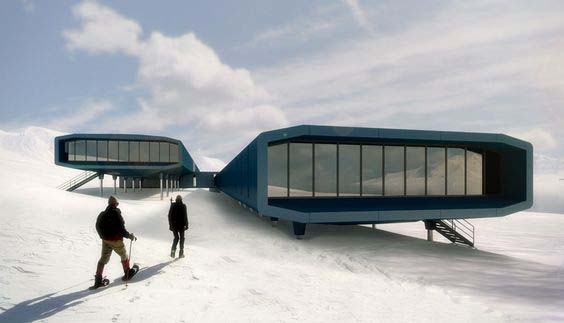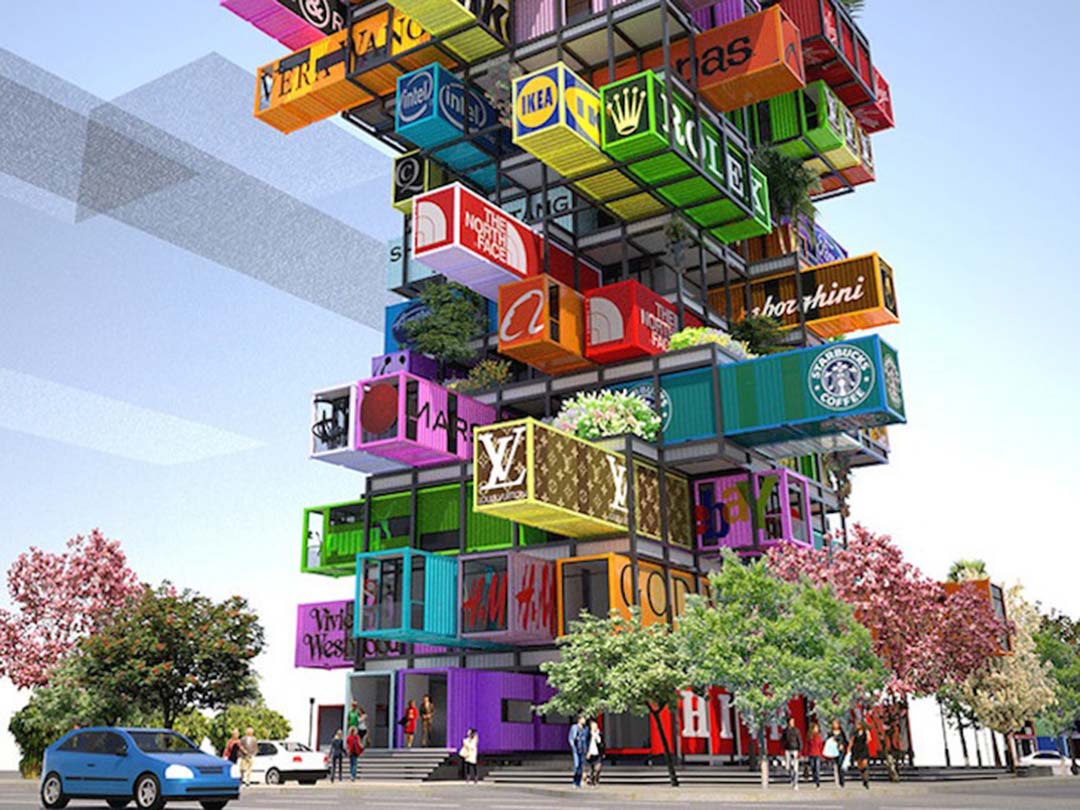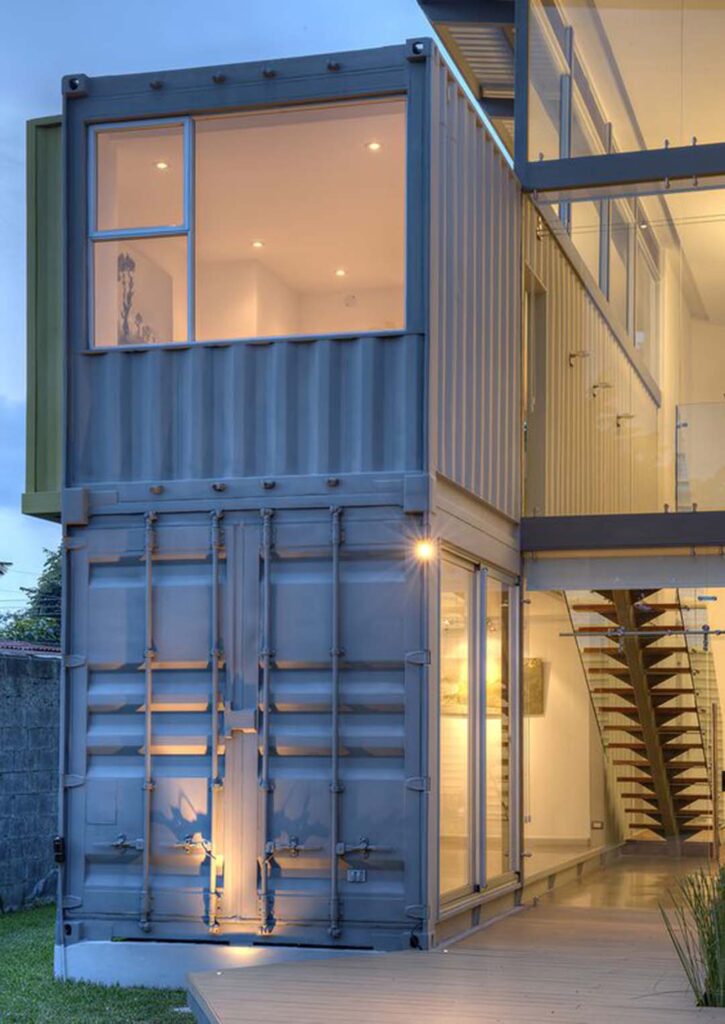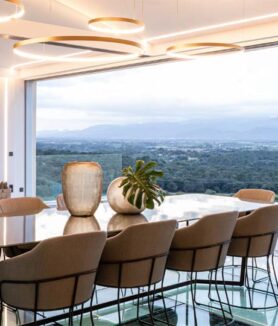Container architecture is a construction method for housing solutions that is setting a new trend in construction.
Professionals in the sector are exploring new forms of use and increasingly daring designs. In addition, they represent an advance in the concept of recycling and sustainability.
Container architecture: What is it?
It is a construction procedure based on the assembly of modular elements. The peculiarity is that these modular units are really freight transport containers. They are the well-known “containers” that are used in maritime and rail transport for the safe storage and transfer of all kinds of products.
What are containers?
According to wikipedia, a container is a cargo container for sea or river transport, land transport (by road or rail) and multimodal transport. These are sealed units that protect goods from the weather and are manufactured in accordance with ISO regulations.
The containers are mainly made of corten steel, but there are also aluminum and some plywood reinforced with fiberglass. In most cases, the floor is made of wood, although there are already some made of bamboo. Inside they have a special anti-humidity coating, to avoid humidity during the trip.
They are robust, durable, economical, easily transportable, adaptable and sustainable.
The construction procedure
First, a reinforced concrete base or foundation must be made, on which the containers will later rest. Next, with the help of the appropriate cranes, the different containers are lifted and coupled. All this, according to the previously established design. For this, the presence, in each of the corners of the container, of housings for the twistlocks, which allow them to be hooked by the cranes, is very useful.
Sometimes it is necessary to make some reinforcement of the container based on the forces that emerge from the calculation of the joint structure.
Advantages of container architecture
The modular unit is the container itself, with almost 30 square meters of interior space; they are robust, durable, economical, easily transportable, adaptable and sustainable. Using this system allows great savings of money, time and energy compared to traditional construction methods. Its resistance and structural design facilitate both its foundation and its spatial configuration. Their versatility makes them adaptable to the most diverse scales and needs: single-family and collective homes, shopping centers, offices, schools, hotels, restaurants, shelters, laboratories and works of ephemeral architecture.
You favor the environment by recycling a container.
They are sturdy and safe.
They are much more harmless to the environment than traditional construction since they do not generate permanent alterations to the land.
Disadvantages of container architecture:
They are narrow. In some spaces, to meet habitability standards, the combination of several containers will be needed. Need to adapt the architectural project to the dimensions of the containers. Need for a structured base and according to its new purpose.Economic investment in its adaptation to its new use as a home. In addition to practicing a structural reinforcement if we want to do things right.
In some projects it will be necessary to use new containers, usually when various heights are required. Container maintenance is expensive. We must avoid its corrosion.
Container buildings
Although container houses are having a considerable increase in followers, the “boom” is focusing on the construction of buildings made with containers mainly due to the low cost and speed of construction.
There are many examples of coherent design and use, but a neighborhood in the city of Amsterdam stands out, the Keetwonen neighborhood, dedicated to students and made up of buildings with these recycled structures.
Examples of container construction

The Bharathi Research Center
The National Center for Oceanics and Research (NCAOR), is one of India’s two active research stations in Antarctica. It was built by the architectural firm Bof Architects, who managed to build it faster using 2,500-square-meter containers.

The “Hive-lnn” or hive structure:
It is a hotel concept devised by Ova Studio for the city of Hong Kong, which opted for a construction based on the concept of recycling and sustainability. The structure of the Hive-Inn allows you to configure

The Incubo House in Costa Rica:
It is a 400m² house built with eight containers, this structure stands as an icon of sustainability by incorporating enclosure methods, lighting, natural ventilation, systems for harnessing solar energy and rainwater, which reduce electricity consumption . It was built by the architect María José Trejos in 2013.
In summary, we can say that the container architecture has many more advantages than disadvantages. The modular unit is the same container, with almost 30 square meters of interior space. They are versatile, robust, durable, economical, easily transportable, adaptable and above all, they are sustainable. Using this system allows great savings of money, time and energy compared to traditional construction methods.











